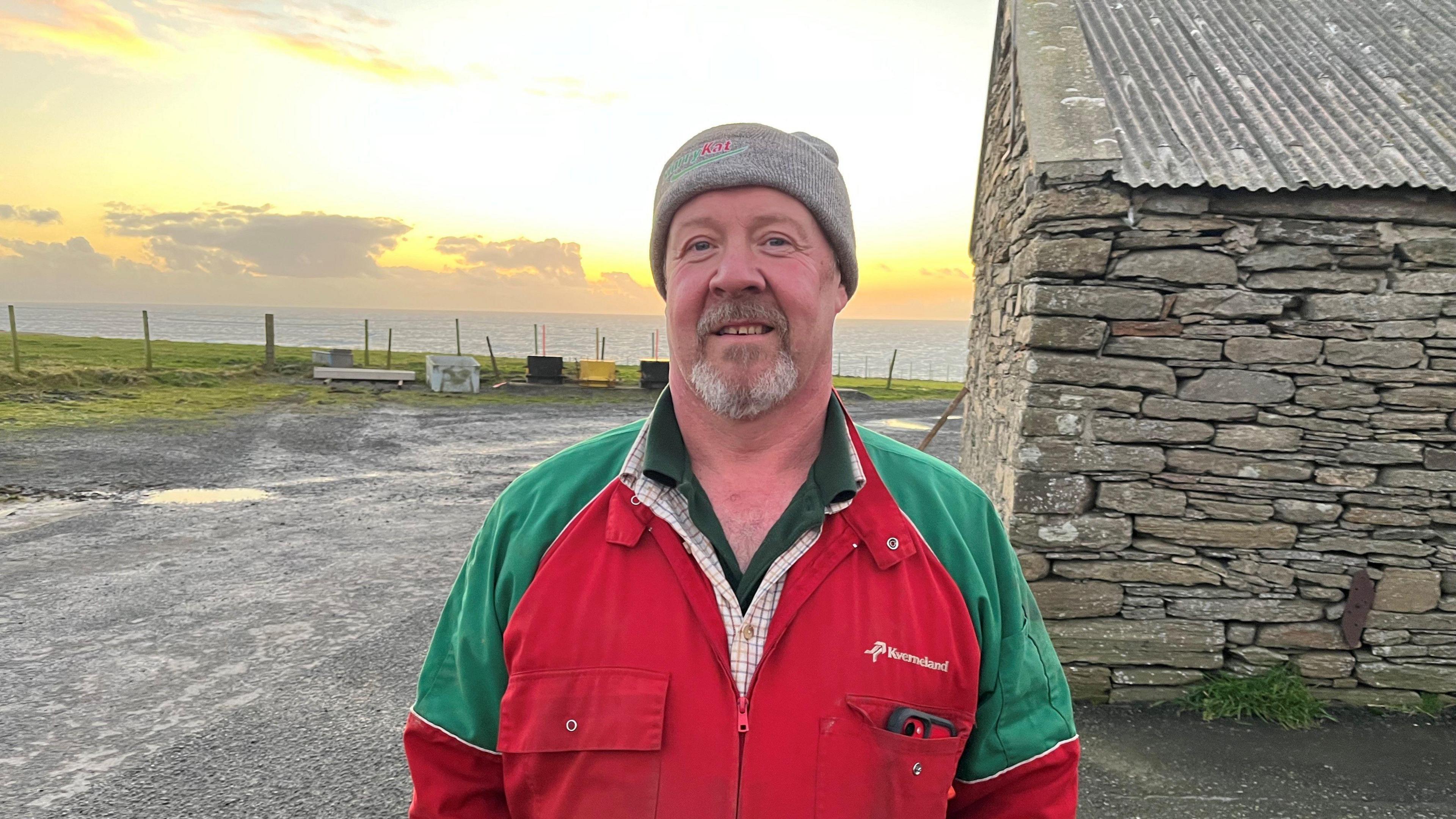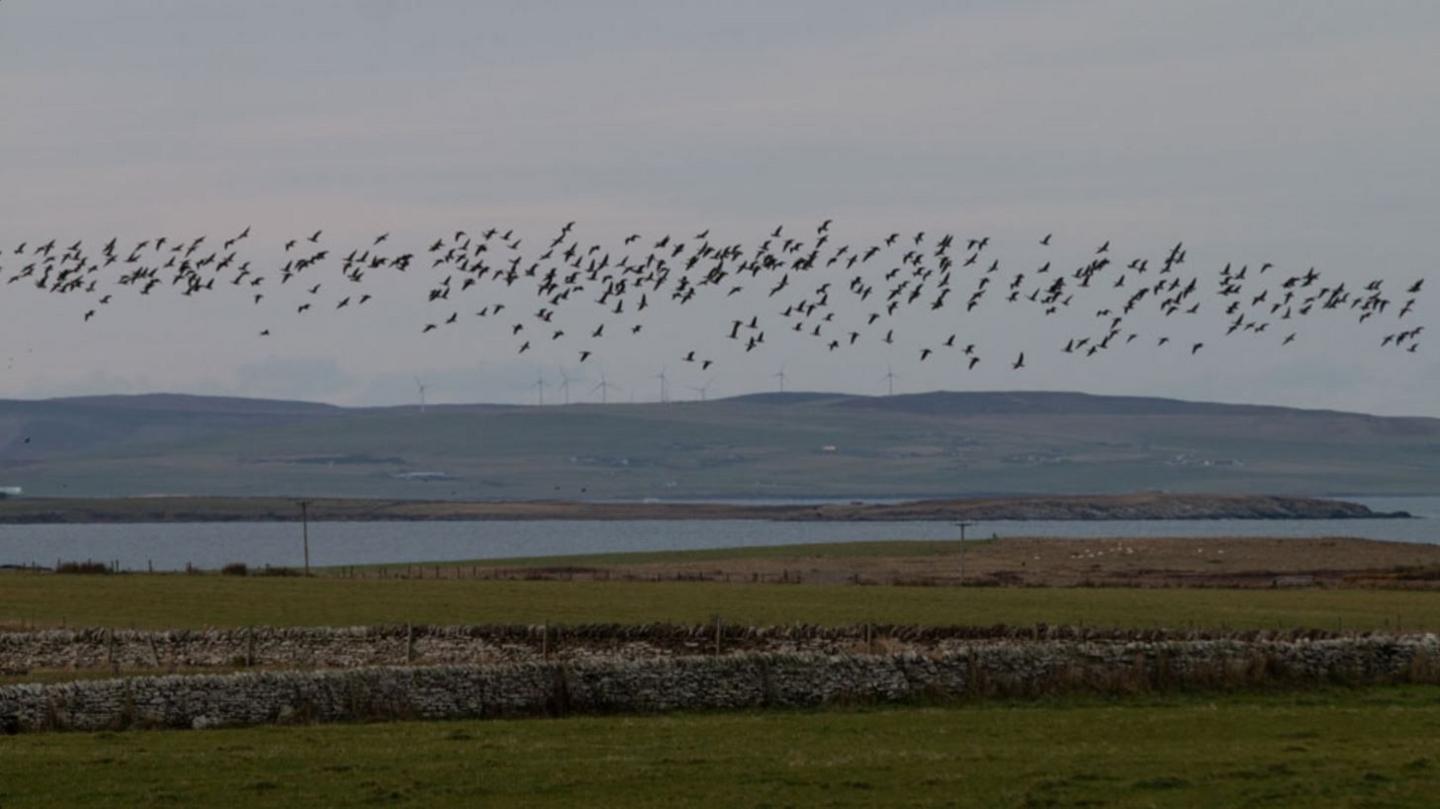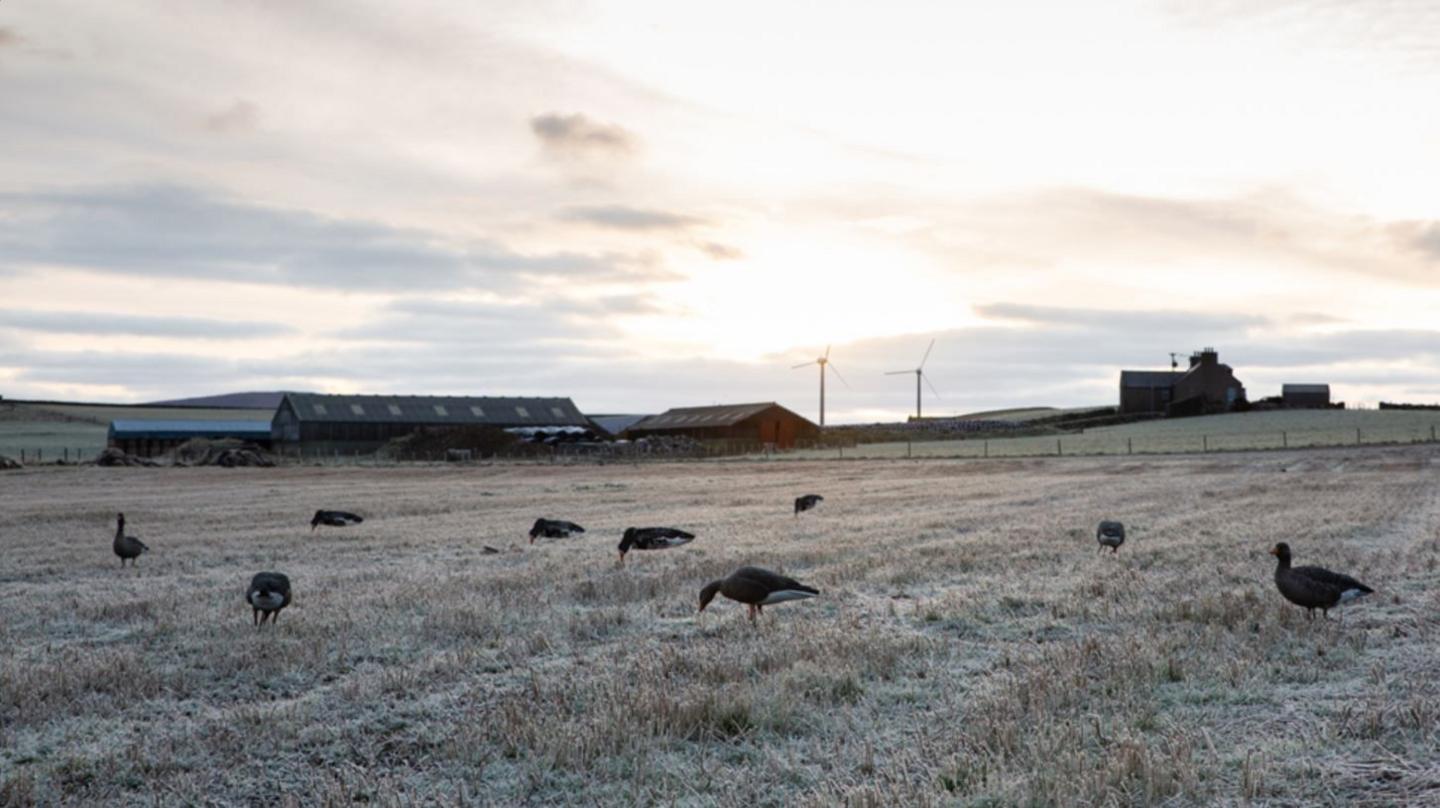‘I have 100 scarecrows but still can’t protect my crops from geese’

Marty Hay is angry about the lack of funding to control geese numbers
- Published
Orkney farmer Marty Hay has a problem with geese.
The greylag geese can eat their way through an acre of crops a night which cost £700 to grow.
Marty has 100 scarecrows, has used gas guns and spent numerous hours trying to see off the geese, to no avail.
He is frustrated that the main focus in Orkney is to rid the islands of non-native stoats instead of dealing with the geese problem.
He has 300 acres of crops and says that for many farmers, the geese are more of a pest.
Stoats have spread across the Orkney mainland and are said to pose a major threat to breeding seabirds as well as the Orkney vole.
Since 2019, £7.9m has been spent and 6,300 stoats have been killed in a multi-million pound scheme run by the Orkney Native Wildlife Project (ONWP).

Shooting holidays are one way farmers control geese numbers in Orkney
Marty is angry that the stoat project receives more funding than the money given to control geese numbers.
A report, published by the Scottish government in February 2024, said that in 2022 the Orkney population of resident greylag geese numbers was approximately 24,000.
It agreed to fund measures to control numbers of resident greylag geese on some of Scotland's islands in 2022.
It provided £50,000 over two years to schemes for Orkney, Lewis and Harris, Uist, Tiree and Coll.
"I’ve never actually met a farmer that’s said that the stoats are a problem, yet the geese are just an absolute pest," Marty said.
"I actually think it affects my mental health, trying to keep the geese out of our barley and our bare.
"We have a hundred scarecrows, we put out scrap cars, we have gas guns and scary men."
Scottish government to fund geese control schemes
- Published16 February 2022
Orkney project granted extra £4m to remove stoats
- Published14 August 2024
Marty believes that the solution could be for the two schemes to work in a co-operative way to address both problems.
"They’re going around baiting traps, especially in the spring. They could be oiling eggs or doing something to help the geese problem at the same time," he said.
"I think farmers would get behind a project like that if it was doing two jobs in one."
He said he could not see stoats being eradicated altogether as some famers were not allowing the ONWP to lay traps on their land as they want more to be done to control the numbers of geese.

In 2022 the Orkney population of resident greylag geese numbers was approximately 24,000
"I don’t think that stoats being here is a good thing but I just cannot see that they will manage to eradicate them," he said.
"There’s certainly pockets of every parish, two or three farmers that have stuck together and won’t allow them on their ground so while it's like that, they’re never going to eradicate them because they have a safe place in every parish."
The ONWP said it was important to keep the eradication of stoats and the control of geese as two separate issues.
It added that there were already enough traps laid to complete a full eradication of stoats, with 83.5% of the Orkney mainland and linked isles covered, including 93% of land where stoats are found breeding and feeding.
According to a report from ONWP, there has been increased nesting success for several bird species.
It also said there had been a 200% boost in evidence of voles, although it admitted that recording actual numbers was difficult.

The geese eat away at farmers crops and it is difficult to stop them from doing this
The project is now entering what is hoped will be its final five years.
The ONWP's report on stoats was written by Allan Perkins, senior conservation scientist for the RSPB.
He said: "It's really proof of what we suspect in that removing stoats will be beneficial for some of these key species.
"So by monitoring the responses by the Orkney voles and some of the key species like the hen harriers and some of the waders, we could show that their numbers and breeding success is increasing at the same time as we're removing the stoats.
"So it kind of validates the project."
He added: "It is a complicated picture. It's quite difficult to isolate stoats as the single factor because there's so many other things impacting on these species."